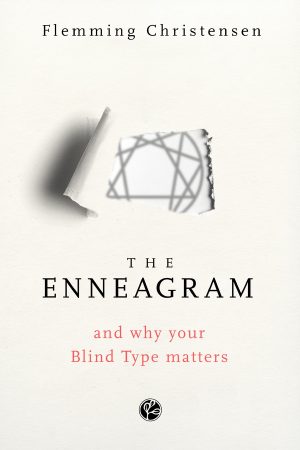Summary and structure
of The Enneagram and why your blind type matters
Background for
the book
During the covid-19 pandemic, the time was right to present a new perspective on the nine Enneagram types. But instead of exploring the types, we took a closer look at the points.
The difference between types and points in the Enneagram is that Enneagram types describe the psychodynamics of the personality type, the inner dynamics between types, and the focus is the fear or the desire of the type.
An Enneagram point is a collection of human skills, capacities, and capabilities. There is no talk about levels, arrows, wings, and triads but a specific focus on the nine different grouping of what we all include as human beings.
More than 400 students attended this program, and the most remarkable part was that some students could not understand, relate or grasp one of the points. It was like the person was blind to the very qualities of the point, and often the feeling about those qualities was aversion, frustration, and sometimes hatred.
At the same time, it seemed like this blind part of a person has a specific connection to your primary Enneagram type. Suddenly 72 specific type-pairs appeared, where each of the type pair we blind to certain paths of meaning and purpose in one’s life.
I knew something important had been revealed, and after interviewing students about their experiences, the foundation for the book was ready.
Personal notes for
faster learning
You will find a section for personal reflections and learning after each chapter. This will guide you into this new material individually or if you use the book in a group study, book groups, teaching, or coaching.

The design for learners and practitioner
Part 1
- Vocabulary of your primary type and how to find your type
Part 1 of the book covers all the elementary components of the Enneagram where you will learn a precise vocabulary for the human qualities of each type, the balanced and unbalanced use of these human qualities, and how we all identify with one of the type’s assumptions and triggers.
This part of the book will help you find your primary Enneagram type more precisely, and if you have a role as a teacher, coach, leader etc. you will learn how to support others in finding their type too.
Part 2
- Vocabulary of your blind type and the interplay between your primary and blind type
Part 2 of the book covers all the new material about working with your blind Enneagram type, including understanding the basic concept, finding your blind type, how to use all three centers in working with your blind type, your Enneagram Life Theme, and how to minimize your identification with types in the Enneagram.
This part of the book will help you take your understanding and experience about your primary Enneagram type to the next level, and you will learn why working with both primary and blind types should be part of every coaching program.
Your blind Enneagram matters because…
-
The negative or limited assumptions and beliefs of your blind Enneagram type impact your primary Enneagram type, and you will understand aspects of your primary type more profoundly.
-
Your blind Enneagram type represents human skills and capacities you are neglecting or might have an aversion to. When you include these suppressed components, new keys and openings will be available.
-
The inner dynamic between your primary and blind Enneagram type represents an Enneagram Life Theme that has been impacting the qualities of your relationships.
The Circle of Development
The Circle of Development will guide you in your learning process and help you discover the structure of your primary Enneagram type and your blind Enneagram type.
You find four stages of learning and development, where I have given much attention to the stage of “Acceptance”.
Working with the Enneagram, there are several areas to accept, like your attachment or identification with your personality, your triggers and aversion, your communication styles, your problem-solving approach, and the way you relate to others.
Without acceptance, you will end up neglecting a major part of what the Enneagram has to offer.

9 Topics You Might Find Interesting In The Book
-
Essential qualities and human skills of each of the nine Enneagram types.
-
Triggers and tendencies of reaction of each of the nine Enneagram types.
-
Description of what it means to be blind in each of the nine Enneagram types.
-
The intelligence of the three centers (sensing, feeling and thinking) expressed for each of the nine Enneagram types.
-
The Enneagram Life Theme and how it is impacting your personal and private relationships.
-
Balanced and unbalanced use of the essential qualities and human skills of each of the nine Enneagram types.
-
Fundamental assumptions that drive and shape the life of each of the nine Enneagram types.
-
Benefits by growing and developing the qualities from each of the nine Enneagram types.
-
Benefits by developing all three centers in your primary and blind Enneagram type.
9 Topics You Might Find Interesting In The Book
-
Essential qualities and human skills of each of the nine Enneagram types.
-
Balanced and unbalanced use of the essential qualities and human skills of each of the nine Enneagram types.
-
Triggers and tendencies of reaction of each of the nine Enneagram types.
-
Fundamental assumptions that drive and shape the life of each of the nine Enneagram types.
-
Description of what it means to be blind in each of the nine Enneagram types.
-
Benefits by growing and developing the qualities from each of the nine Enneagram types.
-
The intelligence of the three centers (sensing, feeling and thinking) expressed for each of the nine Enneagram types.
-
Benefits by developing all three centers in your primary and blind Enneagram type.
-
The Enneagram Life Theme and how it is impacting your personal and private relationships.

